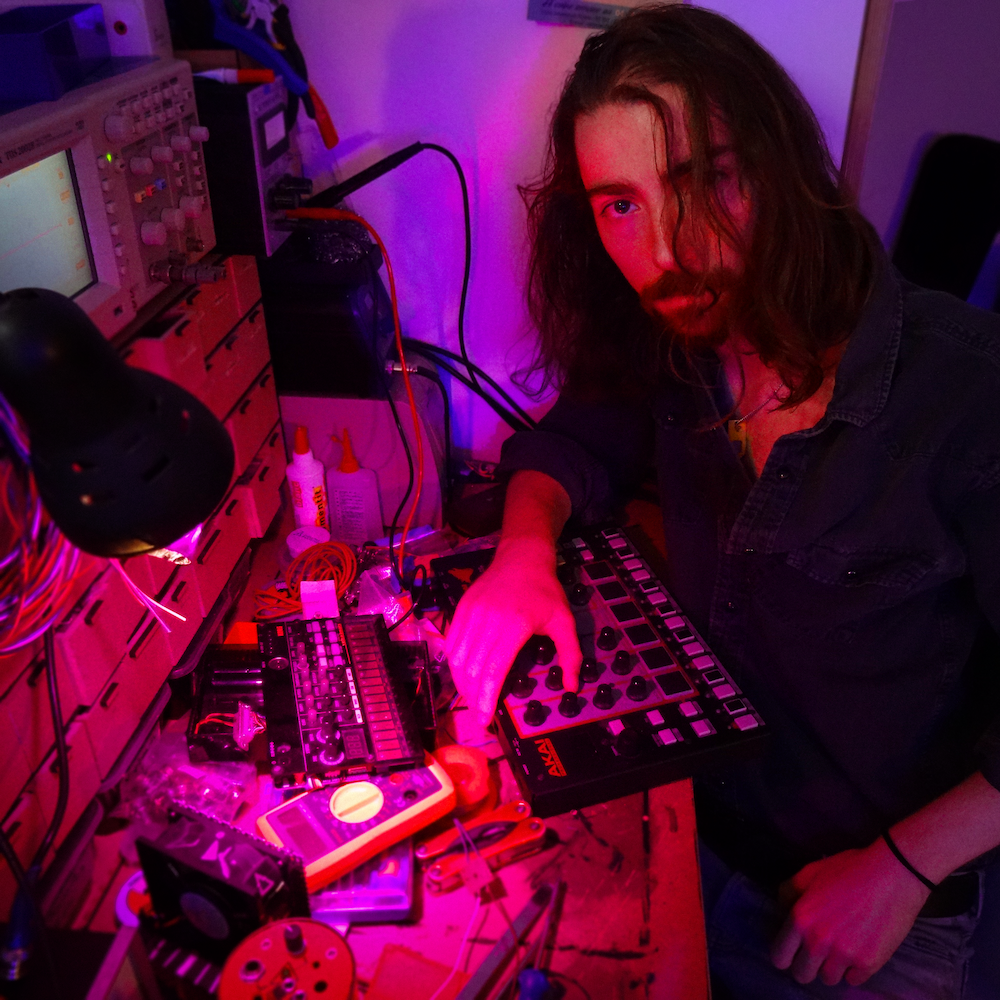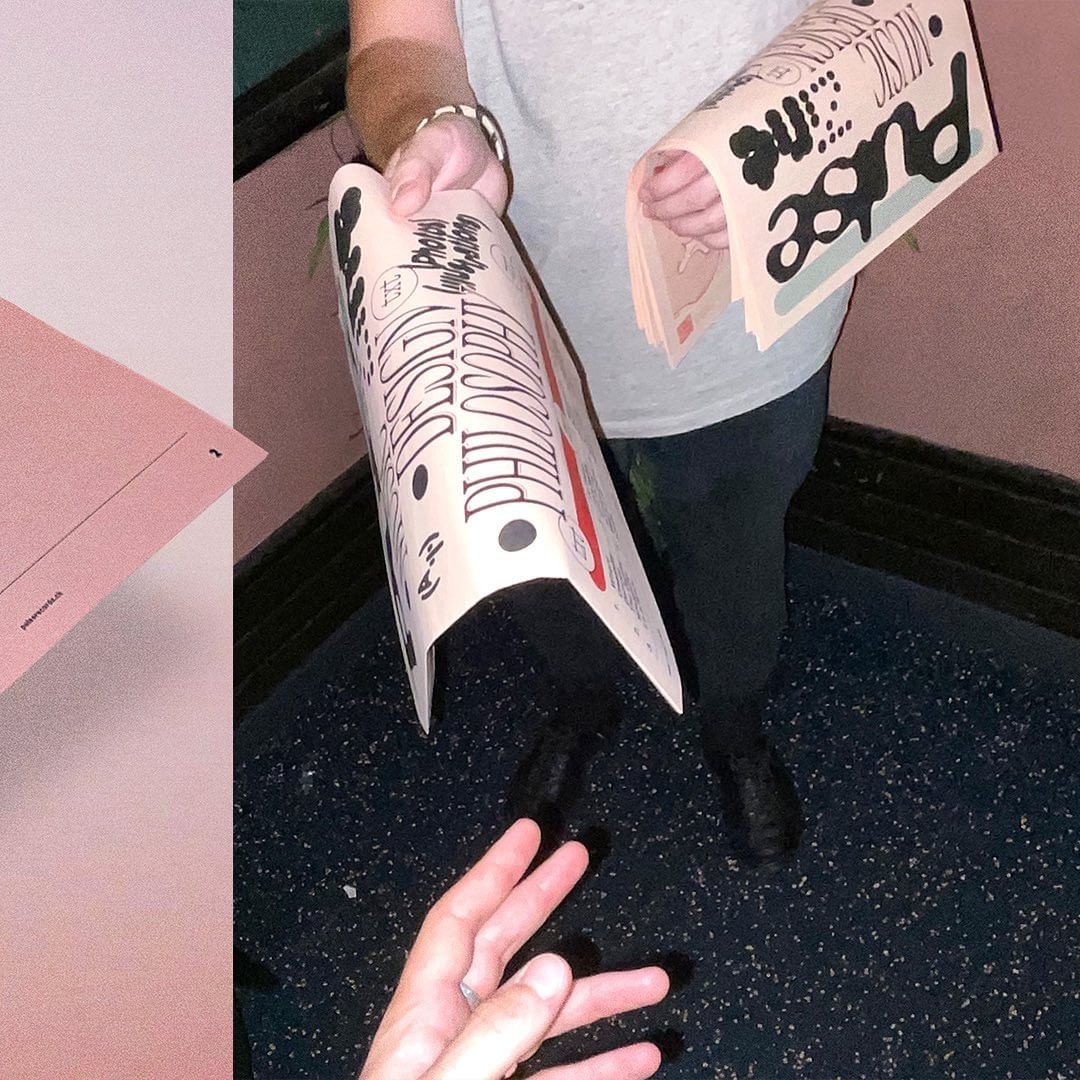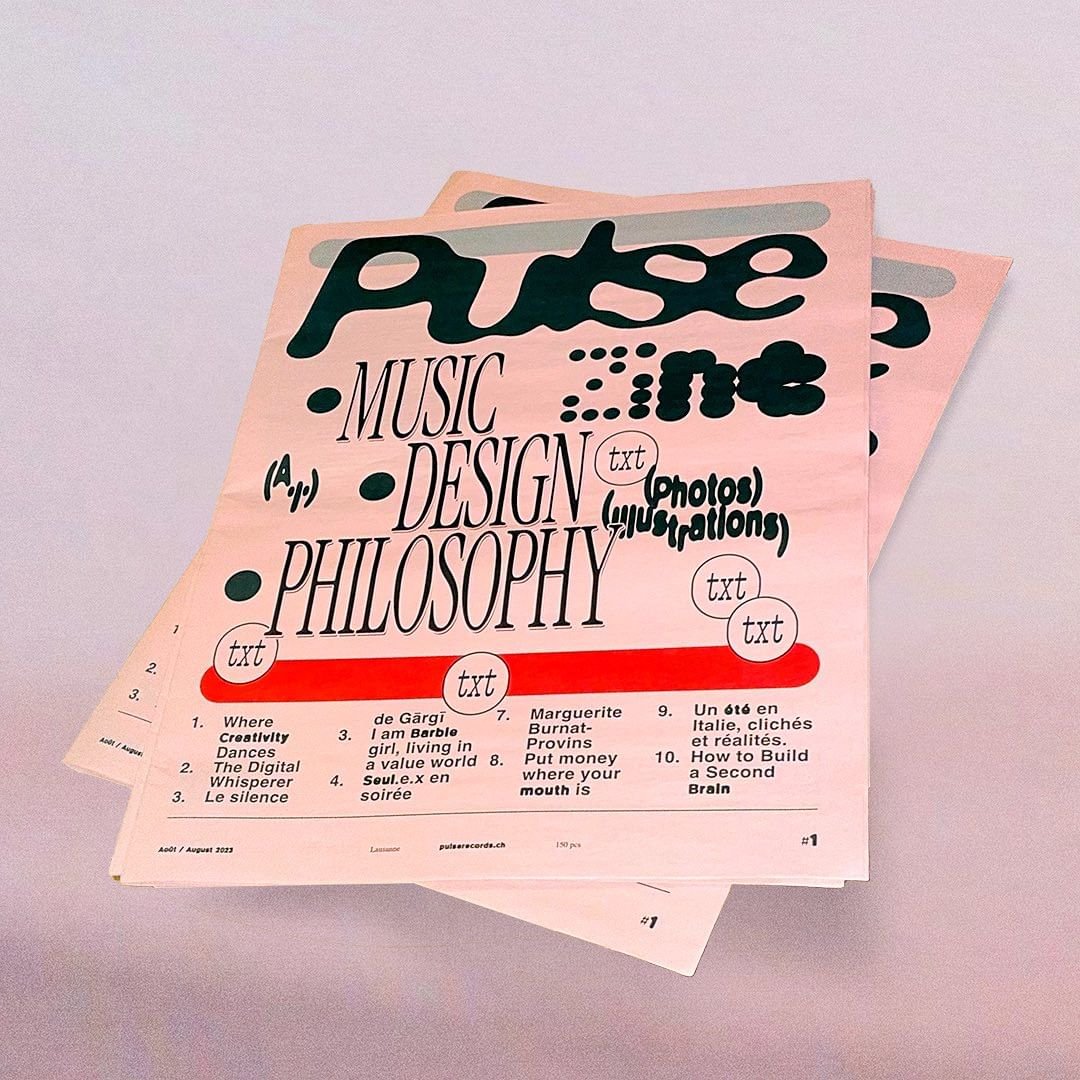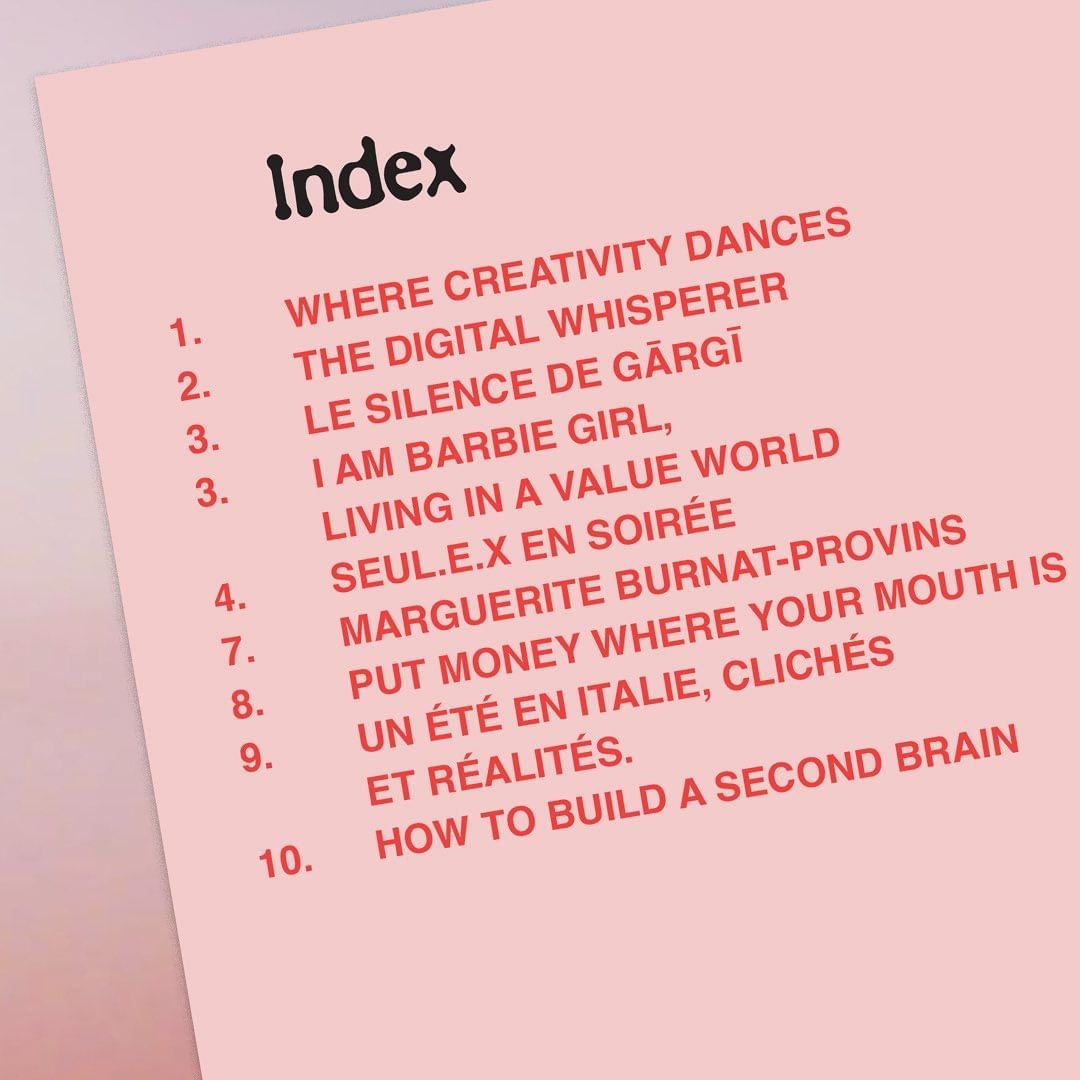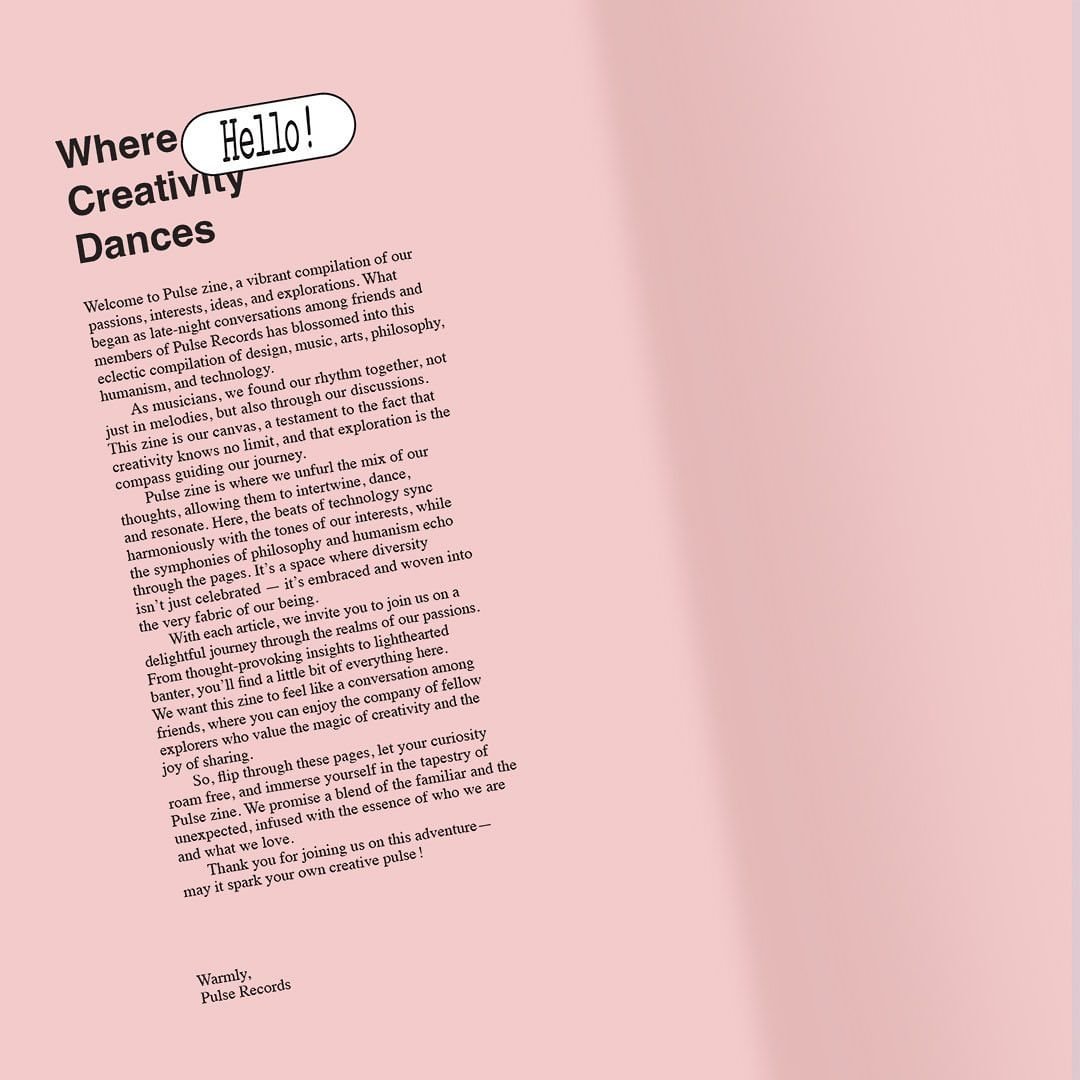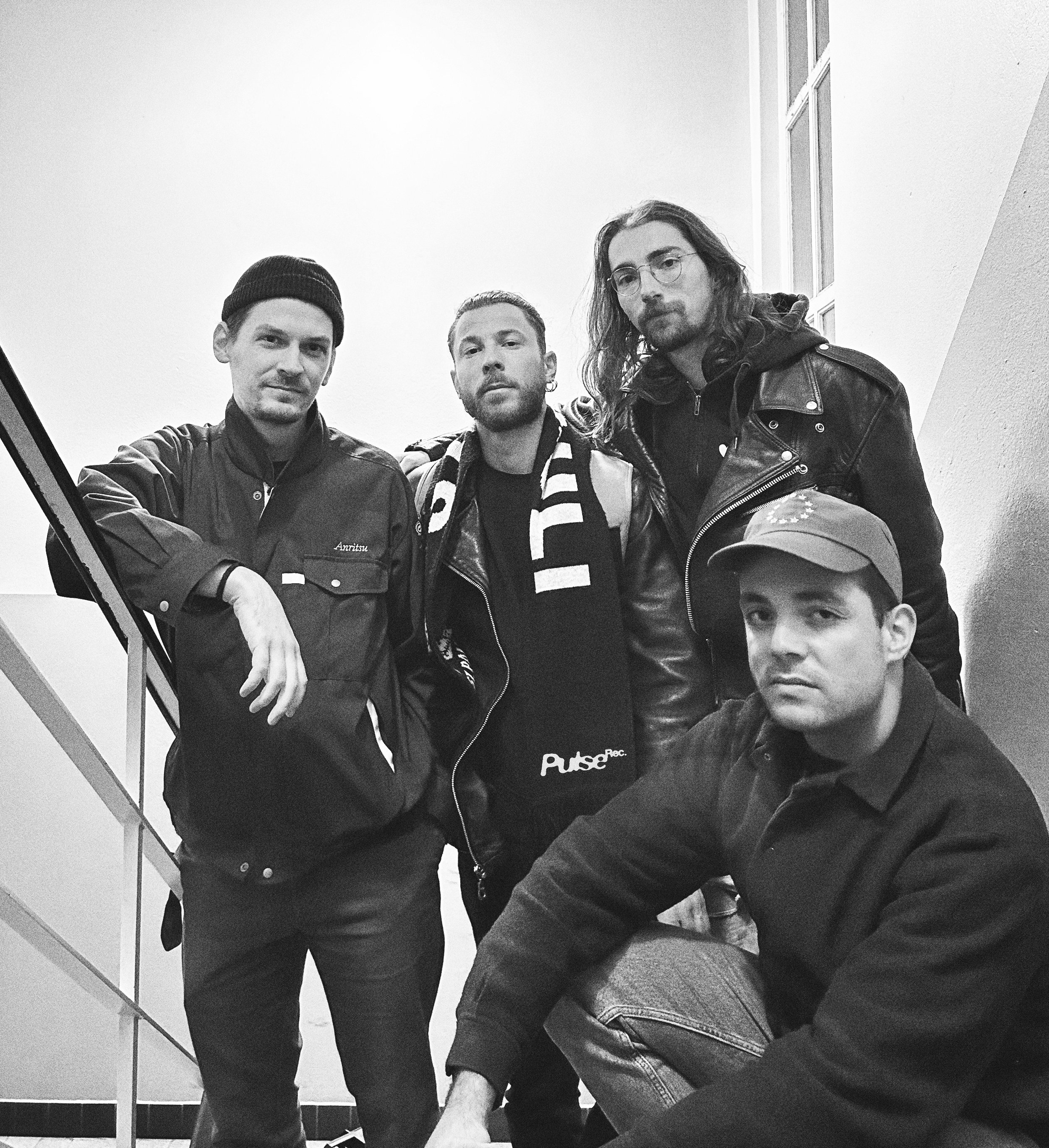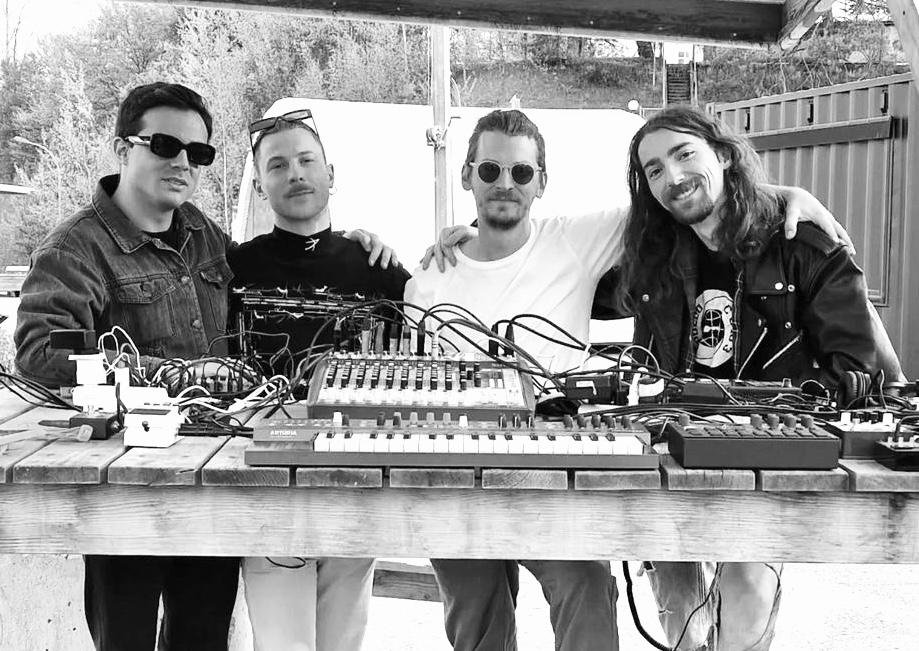More Metal Than Flesh.
A chat with e-garbage.
My last trip to Switzerland this past summer was spent in part in Geneva. A chance of meeting new people within the Genevan scene and discover venues in the likes of La Gravière but more importantly here, Canal 54. Canal 54 is a humble cultural café located in the Jonction district. From the outside, it presents itself as a broadcasting platform with resident curators hosting their own evenings. Whereas in their cellar, a small yet impactful club-oriented floor space.
This is where I met the quiet yet compelling character Eric Nardini.
Having spent years in clubs and raves in Geneva, Eric defines e-garbage as a solo project, oriented towards live performance and studio production with the purpose to realise the essence of a sonic journey and the emotions music evokes with the application of self-realised rawer technique. The Swiss Frankenstein of modular has brought together several of his passions by integrating them into his live setup. Various musical instruments built from recycled materials, repurposed to capture the entrails and pulsations of the machines and shaping them into unlimited sound frescoes. The close link he maintains between the creation of artisanal musical instruments and sound production allows him to craft each tailor-made sound. Captivating and yet disorienting in their strangeness, each of his songs are a marvel of oddity, but familiar genres are discernible beneath the mirage. Mesmerising approximations to aqueous Techno, enriched with various influences such as Noise and Black Metal.
E-garbage’s influences have a definite correlation with his serpentine career path. Whether being a graduate in architecture, programmer, sound engineer at the legendary Motel Campo or releasing music and zines through his co-founded label Pulse. Though seemingly disparate, e-garbage’s projects collectively form an interdisciplinary web of ideas that seek to examine the nature of creative thought.
With LLM, e-garbage pokes and prods musical norms and artistic conventions, probing for the broken seams through which new and untested ideas might spill forth. At the crux of his creative endeavours, one can find familiarity within a collection of sounds from field recordings and from our daily lives, creating textures and flowing melodies whilst fusing sonic elements from both people and machines. Repurposed in e-garbage’s custom sound lab, utilising his mind and extended reach to machinery as his back-end network to bring exposure to his philosophy. In this chat titled "More Metal Than Flesh", we talk about e-garbage's dumpster-diving activities to repurpose electronic appliances as instruments, musical upbringing and current projects as well as a profound discussion on the significance behind his track titles for LLM.
[...] The genesis of my electronic music endeavours is probably relatable to a lot of people. That love story that emerges from when you go to your first raves and clubbing nights. I always had an affinity for making music but never took a leap towards it. Partying is where I took interest in DJing and eventually got some turntables in the summer of 2015. I figured DJing was an accessible entry point in music without necessarily breaking the bank. Therefore the coming months were fully immersed in growing this skill. I was trying a lot of different things out in the beginning but I suppose that I always had this ambition of performing live with hardware. But my whole creative process is based on trial and error. I can remember somewhat painfully the first live gig with my synth setup was catastrophic. But instead of forgetting, you take these bits and pieces of errors and mistakes and incorporate them in your learning book to reflect and hopefully grow from them. I also say this because I think you come a long way from not neglecting these past experiences.
This approach to betterment got me a monthly residency with Owelle at the Canal 54, a venue in Geneva, and instilled enough confidence to start my own record label/collective with friends called Pulse records. The residency with Owelle consists of live jams between the two of us where we usually invite a tertiary guest to join our little setup, whereas Pulse is similar but with a more archival approach to our music, focussing on completed works as opposed to 1 hour improv’ sets. We also started to alternate our creative output with merch’ such as zines to document our local scene. The introduction of this new line of merch was actually presented at our label showcase at the Electrosanne, a Lausanneese festival set in September, where every member of the collective performed live. But as aforementioned, even there for instance, although the prior atmosphere and post-show feedback was all very positive, we individually felt that we could have done a bit better. Although I suppose that this often is the case relating to yourself being your own worst critic.
It’s funny because at first, I was mainly producing beats in the style of Minimal/House because that was more appropriate towards the venues I was playing at at the time. You know, the likes of bars or smaller scale clubs. My entourage at the time also had a big influence musically that drove me in this direction. Although at my core, my music taste expands far and wide, I have a higher affinity towards heavier music. Especially in the likes of black metal or punk, but never saw myself shy away from other heavily contrasting genres, such as currently listening to KPop. This eventually led my interest into the rougher edges of Techno, especially the Industrial side of it. I think after a while though, I started to get frustrated by playing somewhat the same music my friends were doing and therefore wanted to develop a sound more authentic to myself. Something that came a bit more from within, perhaps with a theme, as a means to express more genuineness
To meet this need for a complete change, I decided on a new alias and to dive deep into learning the other intricacies of making electronic music. E-garbage is actually the third alias I have adopted for my creative endeavours. I think I started using this name around the time of the first lockdown back in 2020. Regardless, since I was feeling this sort of frustration and the fact that we were in lockdown meant that DJing was less of a priority. I think how I started to explore this new creative direction towards a sound that I really wanted to make is comparable to when you are a kid and doodle for the sake of drawing something. My approach to producing at the time was very similar. Just trying out different things, see what I am good at and then enhance that aspect. No goal in mind. But still staying true to my roots and evolving and trying out different things in different genres, such as my debut EP that was definitely more inspired by coldwave. Anyways, the genesis of this name came from this period of self-development in reference to my dumpster diving activities and passion for electronics, whether it being programming, coding or building eurorack modules.
The following result was going through a rabbit hole in the world of electronics to which I heavily incorporate to my own musical projects. And thus my ex-girlfriend gave me that name which clicked on the spot. It felt and sounded good. You [Dee Dee] took notice and inquired if the significance of ‘e-garbage’ was in relation to an Instagram story I made a few days prior to this chat in regards to the amount of trials, demos and abandoned projects I have accumulated on my hard drive throughout the years. This accumulated to around several hours of work, excluding solely e-garbage related projects. But this idea of unfinished work, piling up onto one another, mirrors quite effectively the activities of lowkey hoarding electronics in my apartment that would eventually be used in a musical context. It also ties in the fact that my exploration in sound creates an amalgamation of genres I liked or have attempted to produce throughout the years. That, and the fact that my name is Eric seems to tie all of this quite nicely, and thus e-garbage became my main name.
I mainly produce in Ableton, but still record a lot of samples from hardware, either domestic synthesisers or repurposed machinery I have picked up in the streets. As a learning curb , I think the most challenging part of making electronic music as a solo act was the mixing process. When I started a track, I never really had issues in getting inspiration in regards to song structure, sound design or purpose. It’s either I like it or I don’t. Keep or delete the file if it does not suit me. But mixing… That’s a different story. It is really a matter of training your ears to recognise that you will not always be in a familiar environment or professional studio. Most times, it’s on headphones in an apartment that has non square rooms and thus bad acoustiques. You can rely on a spectrum analyser and such but these are reference tools in the end, really. You can have all the knowledge in the world of how a compressor works and its use, but if your ears are not trained to understand drastic changes and nuances, then you cannot apply it effectively to your work. I would say that it is better to have a vague, no, rather approximative general understanding of your tools with trained ears. Then you will always do a better job than trying to make your mix sound good in a room that sounds bad. Cater to your needs, not to other situations, so to speak. Of course YouTube tutorial videos helped me a lot, like I am sure they do for most starting producers.
Since I’m a rather solitary person, learning by myself was no problem. But you have to know what you are looking for and to be able to fact check it, as there is a lot of erroneous or misleading information online. Since I quickly get nerdy when it comes to technicalities, I also think that I owe my betterment as a mixing engineer by breaking out of the box by not focusing solely on how to mix electronic music. What I mean is that I pursued the grander scheme of things by exploring how other genres, such as how rock or trap are mixed. It gives you a better understanding of how other frequencies can complement each other, or clash, which can therefore only better your sound design in the future and prevent wasting time for example in trying to fix a snare for ages. On a side note, I’d like to stress the importance of showing your music to non-musicians. The feedback you can get from them is not negligible. They won't tell you off on a technical level, such as cutting or boosting certain frequencies, but rather an objective statement on your music. Statements such as lacking groove, duration or just sounding bad are useful insights given from the perception of a non-musician on how to better your tracks.
When producing, I don’t really have a fixed routine or strategies I’ve adopted throughout the years. Of course, I would say that the core of my recipe is that my music is rather always rhythmic in nature, which now that I say this here, makes me think that maybe I should oppose that more often. Regardless, I would say that my inspirations are habitual or common place patterns that many producers use. Whether it is being inspired by somebody else's work, a time in your life, or trying a new technique you saw someone apply somewhere. I say applying techniques in reference to these YouTube persona/producers called LOOKMUMNOCOMPUTER or HAINBACH. Their content, whether music or “how to videos”, were very influential to me, especially when building synths or repurposing equipment I have found when dumpster diving. I just love the rapport between that punk, DIY approach and how it ties nicely to electronic music. I mean punk not so much as a genre, but more as an attitude in how I approach music production. Or any creative endeavour for that matter.
That said, I would be remiss if I didn't recognise my position as a sound engineer at Motel Campo as a direct benefactor to my betterment in making music. Being an audio technician in a club happens to be extremely enriching as well as inspiring. Since you spend so many evenings in a booth monitoring sound, you start to really get a feel of what works in terms of song combination and what makes them sound good when you start to reflect and invest yourself in understanding the connection between aesthetically pleasing loops and frequencies. There becomes a pattern that starts to infuse in your self consciousness and you start to see what things work, how tracks can complement each other and at what time in the evening they might sound best. I have been doing this for six years which has been tremendously beneficial for me. You are exposed to so much music from different people. Being surrounded by the same people, the same venue in the same city, you also see an evolution in how trends and genres change. Whether it being music curatorship or DJing styles, there is always something changing that you can take something from. Very educational in that sense as well as always being in the loop of what is going on locally and internationally. I’m not going to lie, since these are 6-8 hour shifts, you tone out a bit at times. Despite this, your brain always absorbs these sonic elements and nuances that may make a track interesting such as understanding which frequencies do what, areas in which lows on the frequency spectrum hits in the chest or in the stomach… or highs for added energy .
We were discussing earlier how I would describe my own music and upon reflection, I think that it depends on the person who is asking me this, such as a fellow producer or someone who is just into music. For the latter, I would simply describe it under the umbrella term of Techno. Techno with works that can be used for DJing or to perform live with DIY hardware. It's what makes the most sense. But then for the former, I would use more specific terminology. In that sense, I like to metaphorise my music to a cake. At its core being Techno, with layers of break-esque or electro-esque rhythms, glazed with icing flavoured trance and synthwave pads.
The conception of this release on Dee Dee’s Picks has been conceptualised between my last previous works with added elements, such as new things I learnt along the way, and a sort of political manifesto that I wanted to express through the alias e-garbage for a while now. You figured that by now, dumpster diving is a big thing for me. So much so that throughout my trips, I was getting a lot of reflection and insight in regards to technology and capitalism.
For myself, as well as for many others in today’s music industry, the ability to distinguish between digital and analogue is becoming almost impossible. For instance, at its core, the majority of today’s music is made with the use of highly intelligent software, like DAWs. However, as the latest AI softwares and the music industry, innovators are continuously pushing the boundaries of human/machine collaboration in musical creation. Music and technology have been intertwining for years, often acting as bandmates. Whether new technology in the likeness of multi-tracking in recordings or synthesisers or even more proficiently, samplers, music makers have been able to tap into new tools that increase the limits of what’s possible in the studio and on stage. Seeing technology as a possibility to better understand one’s actions and at the same time to become unpredictable in music. The idea of Generative AI is redefining creativity, which is why I want to implement behind every facet of my work a focus in the pursuit of creative impulses that are counter-hegemonic. Shifting towards a matter of things that are intended to explore outside of the realm of that which we already know. Regardless, this is my breakdown behind the tracks where there was a more focussed reasoning behind.
The titles of the pieces symbolically follow the path of information in the style of Large Language Models (like GPT, BARD, etc.), hence the title of this release being LLM. In order to train this type of AI model, it is first necessary to collect (data collection) and sort (labelling) basic information from the internet, remove unusable, violent and sensitive content. This operation must in part be carried out by humans, particularly for content of a sexual or violent nature, and is very often outsourced to Africa or Asia, to precarious workers having to filter tens of thousands of images, texts and extremely traumatic videos (“African Moderators”). Once formatted, the data can be used to train these models, thus human-readable texts will be transformed into digital values representing bits of words (tokens) which will allow the model to mathematically “read” a text. in human language. Note that you can subsequently enter sentences which allow unforeseen, absurd, or malicious behaviour of the model, we call this Glitched Token (this technique is mainly used on finished models made available to the public). Then comes the step of “learning” the model (training) using this data, in their mathematical form they can be processed by numerous layers of mathematical equations (layers) themselves made up of millions of smaller calculations. identical to the base: neurons. As in the living world, these neurons communicate together, and the influence of the different neurons on their neighbours is represented by a value w called “weight” or b “bias” (Biased Weight). Once the model is trained and ready for use, it is generally tested via different phases (alpha, closed beta, public beta, release, etc.).
During one of these testing phases of the LaMDA model, an interesting event happened: Blake Lemoine, one of the people in charge of the raw evaluations, recognised a state of consciousness (called ‘sentience’ when talking about machines) and declared it publicly, before it was denied by Google which owns the model. It turns out that he was fooled by the so-called “Stochastic Parrot” phenomenon, which gives the impression that a conversational model behaves as if it were conscious, by repeating (parroting) elements of human language found here and there in the training data and emerged in an unpredictable (stochastic) way while always having meaning, thus giving the illusion of complex reflection, such as for example the expression of feelings through a sentence. This may seem anecdotal, but shows the possibility that the user can quite easily develop an impression of proximity (Hey GPT) or friendship with such advanced models, a new era is opening where we will trust more and more in Intelligence Artificial, giving them through our exchanges ever more learning data, making them ever more advanced (“A New Era”). All the elements of glitches and noises in the songs are in reality data noise, the result of the direct bit-by-bit conversion of code elements into audio. “African Moderators” track is the “audio transcription” of the module defining the classes and functions relating to the convolution filters of the TensorFlow library developed by Google.
Stay up to date and get in touch with e-garbage.

